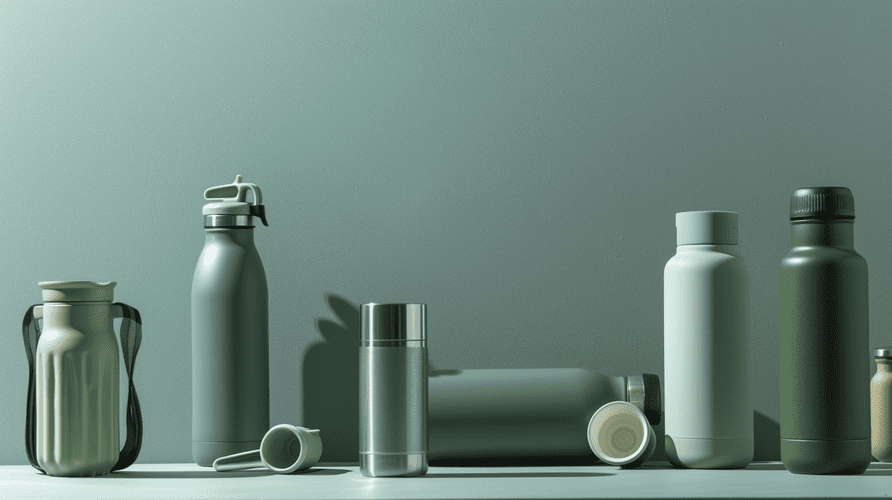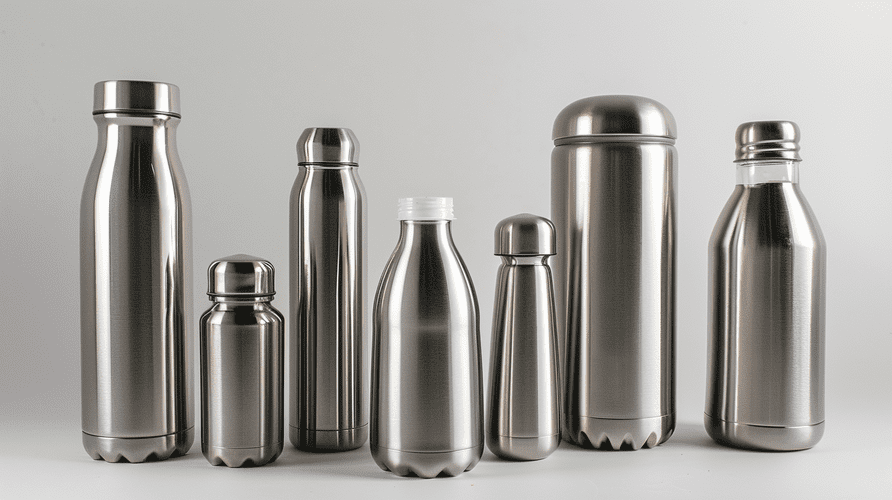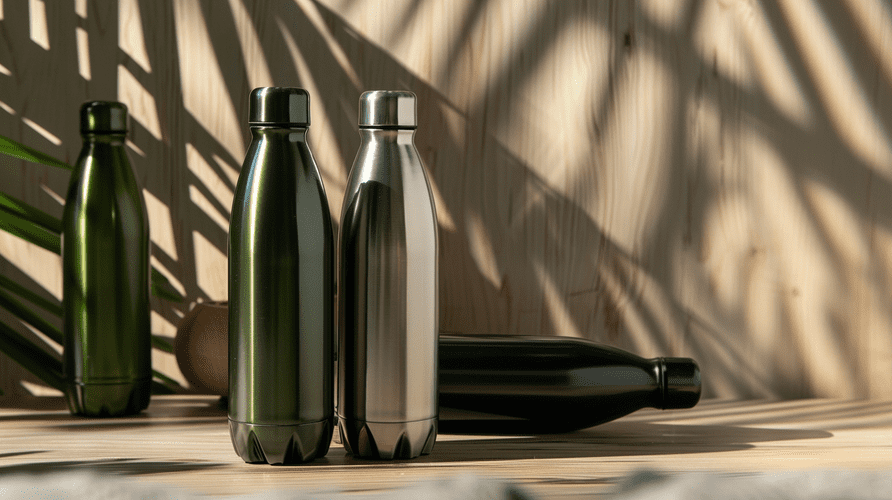Are you tired of flimsy bottles that leach chemicals? Frustrated with drinks that don't stay at the right temperature? Discover the superior choice for hydration and branding.
Purist stainless steel bottles offer unmatched durability, safety from harmful chemicals like BPA, and excellent temperature retention. They represent a sustainable, high-quality solution for health-conscious consumers and businesses looking for reliable, premium products.

Now, you might be thinking about some common concerns. People often ask me about the practicalities of using stainless steel. So, let's explore some of these questions. I want to help you understand why making the switch, or choosing the right supplier, is so important.
What is the disadvantage of drinking water in steel bottle?
Worried your water might taste like metal? Concerned about rust or cleaning difficulties? These are common questions I hear from buyers like Mark in Canada.
The main perceived disadvantages, like metallic taste or potential corrosion, typically arise from lower-quality steel or improper care. High-grade stainless steel bottles, particularly 304 or 316, significantly minimize these issues.

When clients like Mark Shenng from Canada approach me at Icobottle, they often have a checklist. Quality is high on his list, but he's also a savvy businessman looking for competitive pricing. He once asked me, "Aries, my customers are sensitive. What if they complain about a metallic taste from these steel bottles?" This is a fair question.
The Metallic Taste Concern
A metallic taste is sometimes reported. This usually happens for a few reasons:
- Lower-grade steel: Cheaper bottles might not use true food-grade stainless steel.
- Manufacturing residues: If the bottle isn't cleaned properly after manufacturing, residues can affect taste.
- Initial use: Sometimes, a new bottle needs a good wash with baking soda or vinegar to neutralize any initial "new bottle" scent or taste.
At Icobottle, we use high-quality 18/8 (that's 304 grade) stainless steel. We also recommend an initial proper cleaning. For one of my clients, a startup boss, this was a key selling point for their own branded line. They wanted to assure their customers of a pure taste experience. I always tell my clients, when you source from us, you are getting a product designed to avoid this.
Corrosion and Durability
Rust or corrosion is another concern. "Will these bottles last, Aries, or will they rust quickly?" Mark once questioned. This is where the grade of stainless steel is very important.
| Feature | Low-Grade Steel | 304 (18/8) Food-Grade Steel | 316 (Marine Grade) Steel |
|---|---|---|---|
| Composition | Higher carbon, fewer alloys | 18% Chromium, 8% Nickel | Higher Molybdenum content |
| Corrosion Risk | Higher | Low, resists most oxidation | Very Low, even in salty conditions |
| Taste Impact | More likely to impart taste | Neutral taste profile | Neutral taste profile |
| Cost | Lower | Moderate | Higher |
We primarily use 304 stainless steel for its excellent balance of safety, durability, and cost-effectiveness for drinkware. For clients needing extreme corrosion resistance, 316 is an option, though it's usually more than necessary for typical water bottles. Proper care, like not leaving acidic drinks for very extended periods and regular cleaning, also helps maintain the bottle's integrity. My experience shows that with good quality steel, these disadvantages are largely overcome.
What stainless steel water bottles have no lead?
Is your current bottle supplier guaranteeing lead-free products? Hidden lead can be a major safety risk. It’s a non-negotiable for health and compliance.
Reputable manufacturers ensure their stainless steel bottles are completely lead-free. This includes the main body and, crucially, any soldering points, which is where lead can sometimes be found in cheaper alternatives.

The issue of lead in consumer products is a serious one. As a procurement officer for his company in Canada, Mark is acutely aware of this. He knows that products sold in North America and Europe must meet strict safety standards. "Aries," he once said during a sourcing discussion, "I need absolute certainty that these bottles are lead-free. A product recall would be disastrous for my brand." He's absolutely right.
Where Can Lead Hide?
Lead isn't usually in the stainless steel itself if it's good quality. The main risk comes from a few areas:
- Sealing dots/pellets: Some vacuum-insulated bottles use a small pellet to seal the vacuum space at the bottom. In poorly made bottles, this sealing material can contain lead. If the protective outer layer of the bottle base is damaged, this lead could potentially be exposed.
- Exterior paints and coatings: Though less common on the steel itself, lead could be present in certain cheap paints used on the bottle's exterior.
- Soldering points: If any parts are soldered (less common in seamless bottle designs), lead-based solder is a cheap option that unscrupulous manufacturers might use.
At Icobottle, we understand these risks. This is why our manufacturing process is designed to eliminate lead.
Our Commitment to Lead-Free Products
We take several steps to ensure our bottles are lead-free:
- Material Sourcing: We use certified lead-free, food-grade stainless steel (typically 304 or 18/8).
- Manufacturing Process: For our vacuum-insulated bottles, we use lead-free sealing methods. We avoid solders that could introduce lead.
- Third-Party Testing: We conduct regular third-party testing of our products to verify they are lead-free and meet international safety standards like FDA, LFGB, and Proposition 65.
- Documentation: We provide clients like Mark with Material Safety Data Sheets (MSDS) and testing reports. This transparency is key.
I always tell my clients, including startup bosses who are building their brand from scratch, that you cannot cut corners on safety. Choosing a supplier like Icobottle, who prioritizes and verifies lead-free products, is an investment in your brand's reputation and your customers' well-being. Mark’s concern about certificate fraud by some suppliers is valid. That's why we believe in transparent, verifiable documentation.
What is the best water bottle for no mold?
Tired of finding gunk in your reusable bottle? Worried about hidden mold affecting your health? You need a bottle designed for easy hygiene.
The best stainless steel water bottles for preventing mold growth feature wide mouths for easy cleaning and thorough drying, and smooth, electro-polished interiors that resist residue buildup.

Mold is a persistent issue with many reusable containers if they aren't designed or cared for properly. Mark once shared a pain point: "Aries, my customers sometimes complain about a musty smell or visible mold in other bottles they've used. It's a big turn-off." He's right. This is especially true for his business model, which involves rebranding and selling at a premium in Canada. Product quality and user experience are paramount.
Why Does Mold Grow in Bottles?
Mold thrives in damp, dark environments with a food source. Inside a water bottle:
- Moisture: Lingering water droplets after use.
- Organic Matter: Tiny particles from drinks (especially sugary or milky ones) or even backwash.
- Difficult to Clean Areas: Narrow necks, complex cap mechanisms, or rough interior surfaces can trap moisture and residue.
As someone who understands sales but lacks deep technical expertise, Mark appreciates when I explain these practical aspects. It helps him communicate benefits to his customers.
Features That Combat Mold
When we design and manufacture bottles at Icobottle, we focus on features that make them less hospitable to mold:
- Wide Mouth Openings: This is crucial. A wider mouth allows for easier access for cleaning brushes and, just as importantly, allows the bottle to air dry more effectively. I often show clients the difference between a narrow-neck bottle and a wide-mouth one for cleaning.
- Simple Lid Designs: Lids with fewer nooks, crannies, and complicated mechanisms are easier to clean thoroughly. Some lids can be disassembled for cleaning.
-
Electro-polished Interiors: This is a significant advantage. Electropolishing creates an incredibly smooth, almost mirror-like surface inside the bottle. Surface Type Adhesion for Bacteria/Mold Cleanability Standard Finish Higher (microscopic pits) Good Electro-polished Lower (smoother surface) Excellent This smoother surface makes it much harder for bacteria, mold spores, and residues to cling to the bottle walls. It also makes cleaning more effective.
- High-Quality Materials: Food-grade stainless steel itself is inherently resistant to mold growth compared to some plastics.
I always advise Mark and other clients that educating end-users on proper cleaning is also important – regular washing with soap and water, and allowing the bottle to dry completely. However, starting with a bottle designed to minimize mold risk, like those we produce at Icobottle, makes this task much easier and more effective. This directly addresses a common pain point and enhances the perceived value of the product.
Conclusion
Choosing purist stainless steel bottles from a reliable B2B supplier means quality, safety, and user satisfaction. This translates to a stronger brand and happier customers for you.

